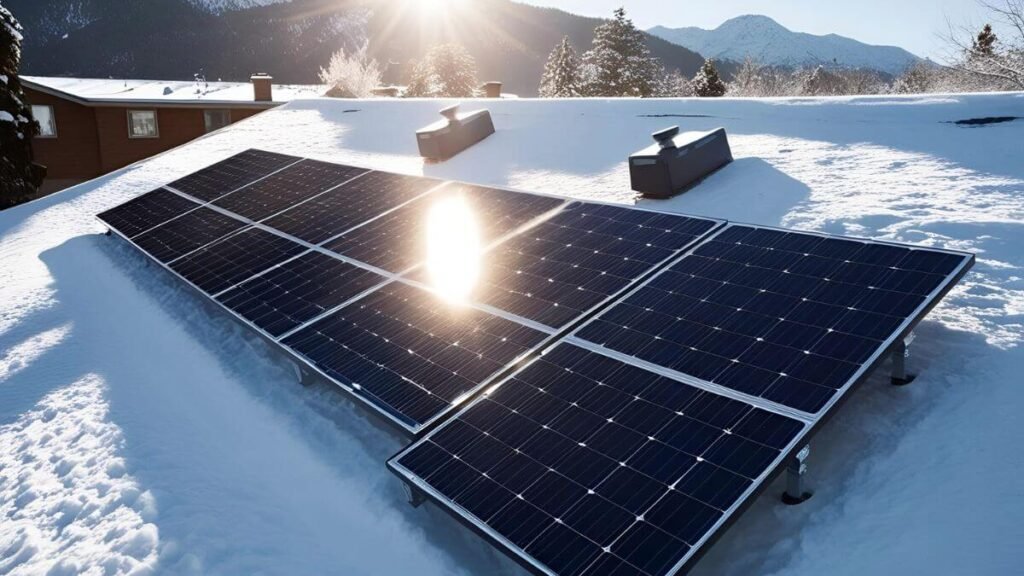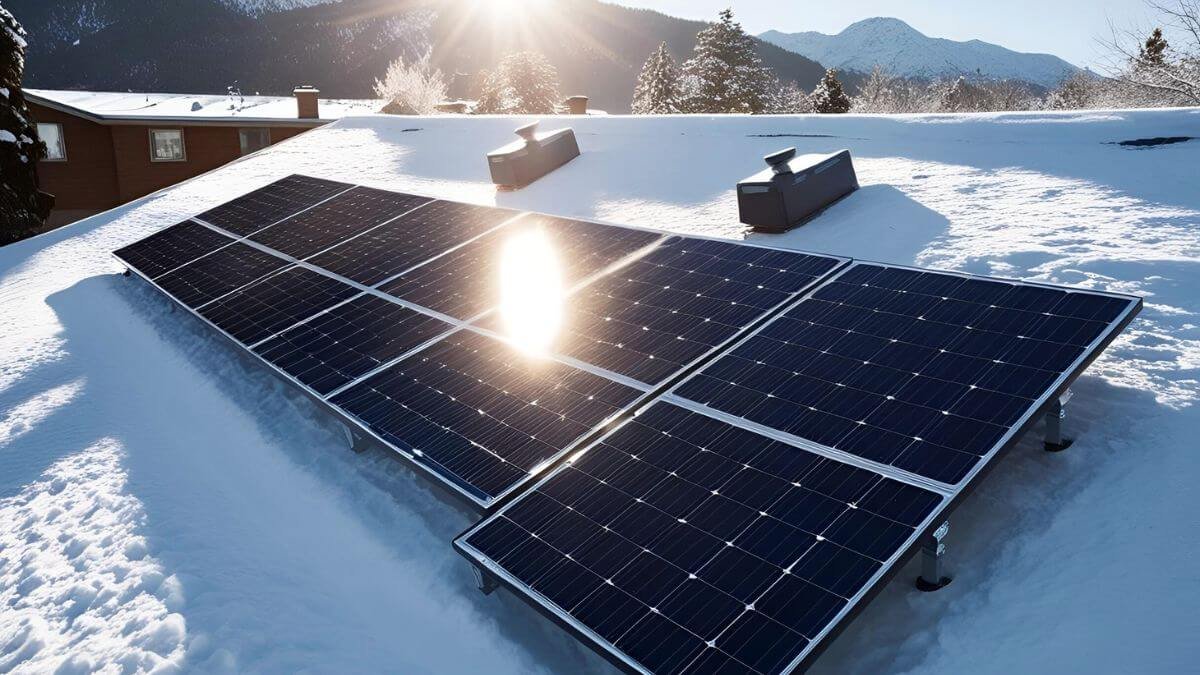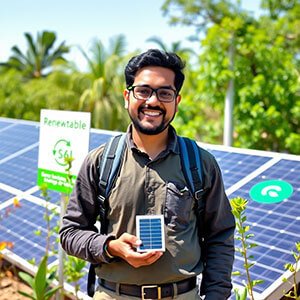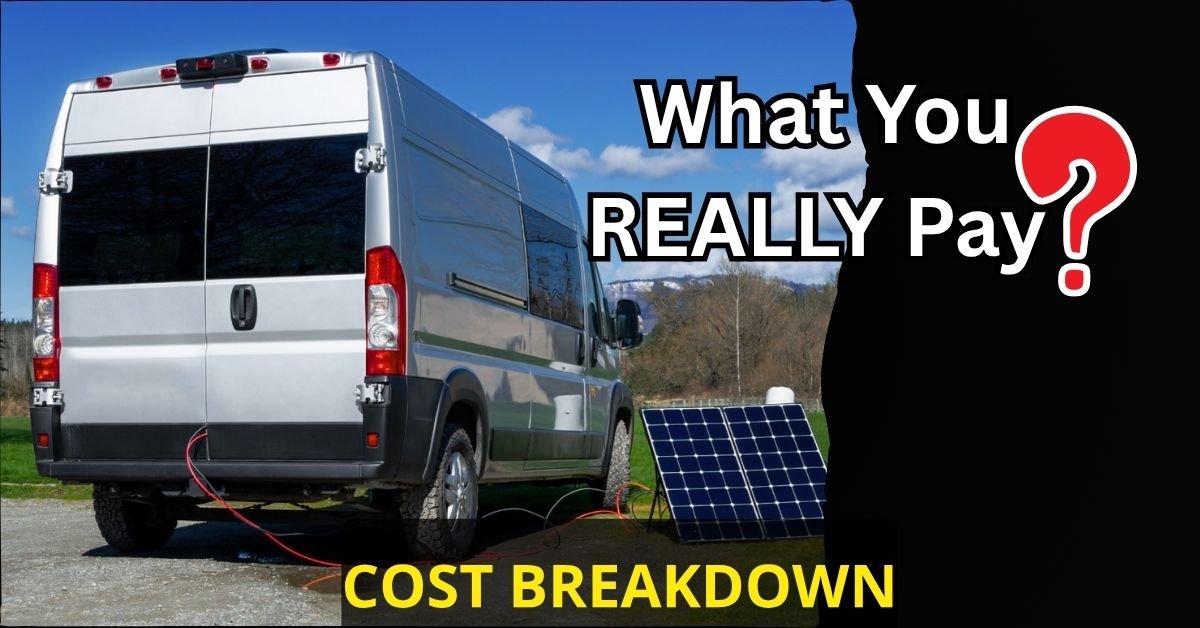When winter blankets the landscape in snow, homeowners with solar panels often wonder: Do solar panels work in snow country? The short answer is yes! Solar panels can still generate electricity in snowy conditions, but their efficiency may vary.
Solar technology is surprisingly resilient, even in regions where snow, ice, and freezing temperatures are part of the seasonal package.
In this guide, we’ll explore how solar panels perform in winter, the effects of snow accumulation, and practical tips to maximize energy production. Whether you live in a snowy region or are considering solar installation, this article will help you make an informed decision.
Solar Panel Function in Winter
Solar panels rely on sunlight, not heat, to generate electricity. This means they can still produce power in cold climates as long as they receive sufficient sunlight.
In fact, many solar systems actually perform better in colder weather because solar cells operate more efficiently at lower temperatures. However, heavy snow accumulation can temporarily block sunlight and reduce output.
Effects of Snow Accumulation
While solar panels can work in snowy conditions, snow accumulation presents some challenges:
- Light Blockage: A thick layer of snow can block sunlight, reducing energy production.
- Self-Cleaning Effect: Most solar panels are installed at an angle, allowing snow to slide off as it melts.
- Reflective Benefits: Fresh snow can reflect sunlight (albedo effect), potentially increasing panel efficiency once cleared.
Pro tip: A single sunny day can clear panels completely if snow buildup isn’t excessive.
Do Solar Panels Work in Snowy Weather?
Yes, solar panels can still work in snowy weather, although not always at full capacity. On cloudy, overcast winter days, the panels typically produce 10-25% of their rated capacity. Only the exposed parts produce electricity when the panels are partially covered in snow.
Here’s the good news: Even light snowfall usually melts quickly in direct sunlight. And thanks to the panels’ dark color, they absorb heat, which also helps them melt faster.
In short, with some considerations:
- Partial Coverage: If only part of the panel is covered, it can still generate some electricity.
- Temperature Impact: Cold weather improves conductivity, slightly boosting performance when panels are clear.
- Shortened Daylight: Winter days have fewer sunlight hours, naturally reducing total energy output.
Tips to Improve Efficiency in Snow
Want to keep your solar panels working optimally in snow country, or to maximize your solar panel performance during winter? Follow these best practices:
✅ Install Panels at the Right Angle: A steeper tilt helps snow slide off more easily.
✅ Choose a Snow-Resistant Design: Some panels have hydrophobic coatings to prevent heavy buildup. You can also use microinverters or power optimizers so one snow-covered panel doesn’t affect the whole system.
✅ Monitor Energy Output: Track performance to detect unusual drops caused by snow coverage.
✅ Gentle Snow Removal: If needed, use a solar panel snow rake (never metal tools that could scratch the surface).
✅ Trim nearby trees: Prevent branches from dropping snow onto panels after storms.
Do Solar Panels Work in Snow Country?
If you live in a region known for heavy snowfall, such as Colorado, Vermont, Michigan, or Canada, you might wonder whether solar is worth the investment.

The answer is: Absolutely Yes! Many homes in snowy regions successfully use solar energy year-round. However, some of the most solar-progressive regions in the world get plenty of snow.
Regions Where This Is Important
Cold climates with high utility rates and strong net metering policies often make solar adoption financially rewarding. For example:
- Colorado: Over 300 sunny days a year, but lots of winter snow.
- Minnesota, Maine & Wisconsin (Northern U.S.): Long winters haven’t stopped solar adoption.
- Canada (Ontario, Quebec, Alberta): Especially in provinces like Alberta and Ontario.
- Alaska: Despite the cold and darkness in winter, summer solar compensates with extended daylight.
- New York and Massachusetts: These two states offer generous incentives and rebates.
- Nordic Countries (Norway, Sweden, Finland): Even in these snow-covered regions, solar energy plays a very effective role in various strategies and scenarios.
Many homeowners in these regions successfully use solar power year-round, proving that solar panels do work in snow country with proper planning.
The key takeaway? Latitude and snow don’t disqualify solar; they just require smarter design.
Myths & Facts About Solar Panels in Snow
Let’s clear up some common misconceptions about using solar in snow country.
| Myths | Facts |
| Solar panels don’t work at all in winter. | They work, just less efficiently due to reduced sunlight and possible snow cover. |
| You need to shut down your system in winter. | No! Modern systems are designed to run year-round. |
| Cold weather reduces efficiency | Cold actually boosts efficiency |
| Snow will damage your system | Most systems are built to withstand winter conditions. |
Automatic Solar Panel Snow Removal
Some commercial systems use automated snow removal methods, such as heated panels or motion systems, but these are often costly and impractical for residential use. As a homeowner, you can also use these automatic solutions to clear snow from your panels.
Solar Panel Snow Guard
A snow guard is a protective device installed above solar panels to prevent large chunks of snow from sliding off roofs and damaging the array. While it doesn’t remove snow, it improves safety and prevents sudden snow avalanches. They’re great for:
- Protecting people and property
- Preventing snow damage to gutters and walkways
Solar Panel Snow Melter
Heated mats or de-icing systems can be installed to melt snow directly on the panels. While not widely adopted, these systems are energy-efficient and can be activated automatically when snow is detected.
Pros:
- Effective at snow removal
- Reduces manual labor
- Minimizes damage risk from ice buildup
Cons:
- Increases electricity use
- It can be expensive to install
- Adds complexity to your solar system
Solar Panel Snow Rake
A popular and affordable option is using a solar panel snow rake. This is a long and lightweight tool designed to safely remove snow without touching the panels.
Features:
- Made with soft, non-abrasive materials
- Allows you to gently clear snow from ground-accessible panels
- Ideal for DIY homeowners
Pros:
- Inexpensive
- Easy to use
- Immediate snow removal
Cons:
- Requires physical effort
- Risk of scratching panels if used improperly
✅ Avoid using metal tools that can scratch or damage your panels.
Final Thoughts,
So, do solar panels work in snowy country? Absolutely! While snow can temporarily reduce efficiency, modern solar systems are designed to handle winter conditions. With the right setup and occasional maintenance, you can enjoy clean energy year-round, even in the snowiest climates.
You can read: How to Store Solar Energy for Night Use? (Batteries and Beyond).
Ready to go solar? Get a free consultation today and see how solar panels can work for your home, no matter the weather!
📌 Pro Tip: Bookmark this winter solar panel maintenance guide and share it with fellow eco-conscious homeowners!








